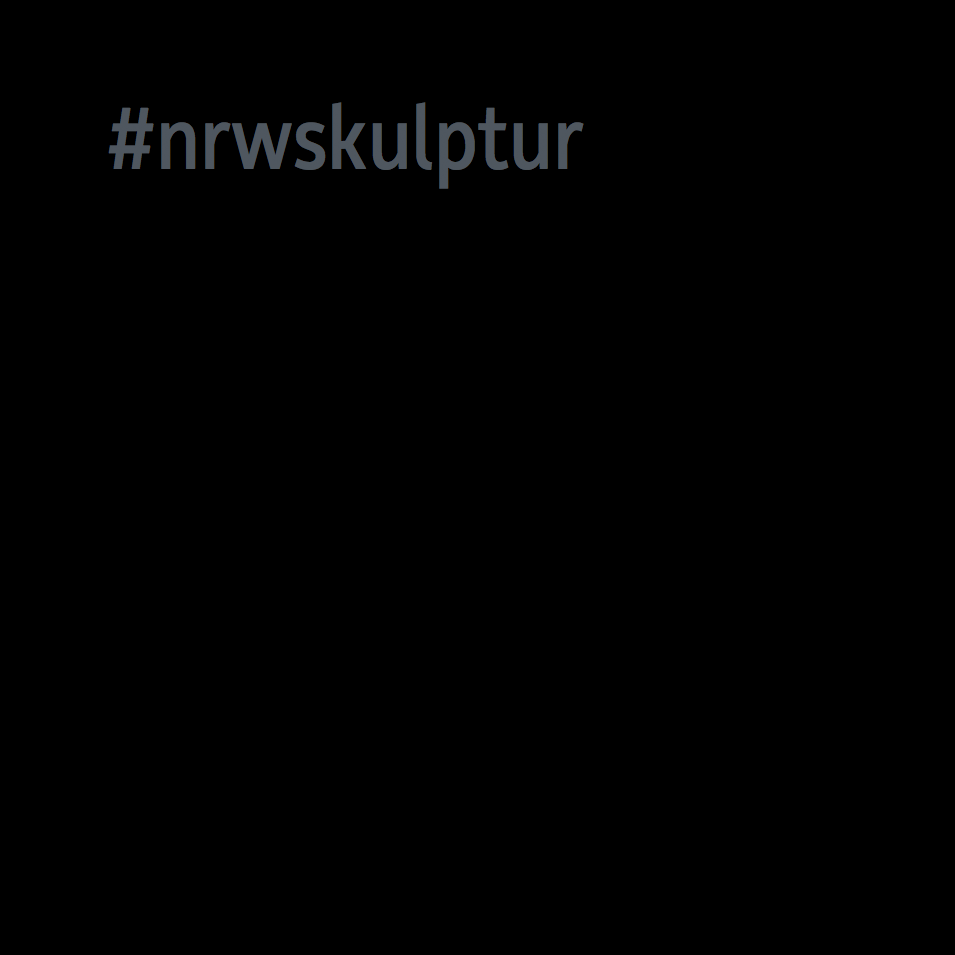Ruhender Verkehr / Stationary Traffic
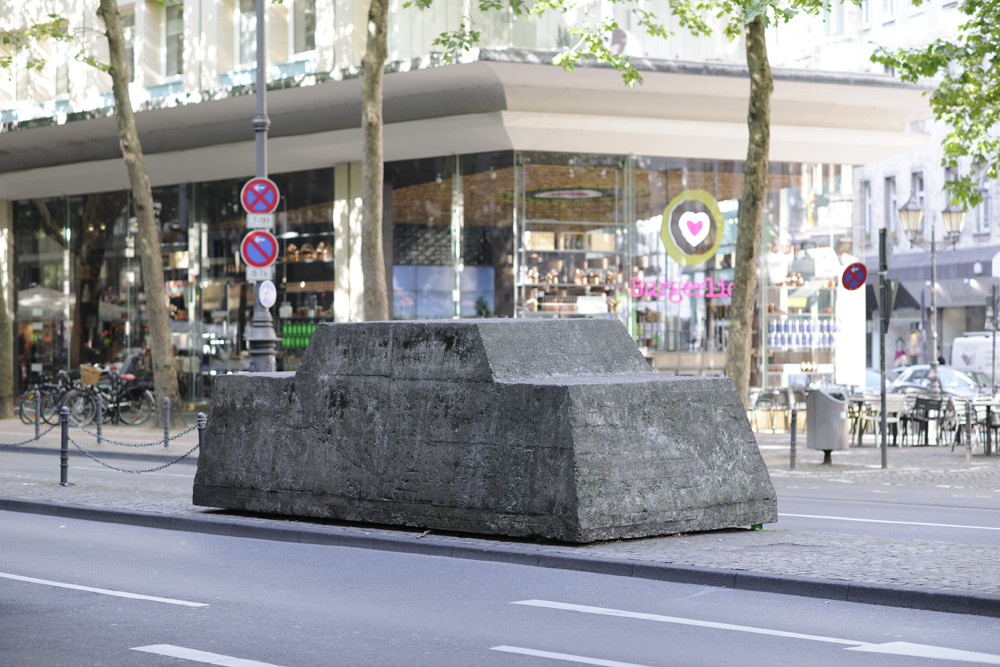
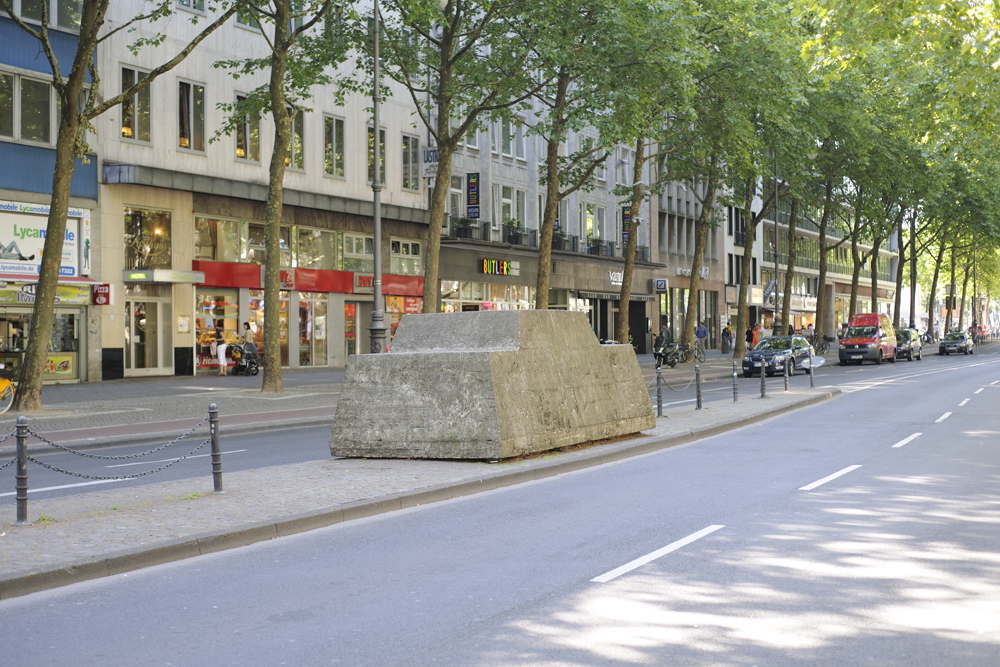
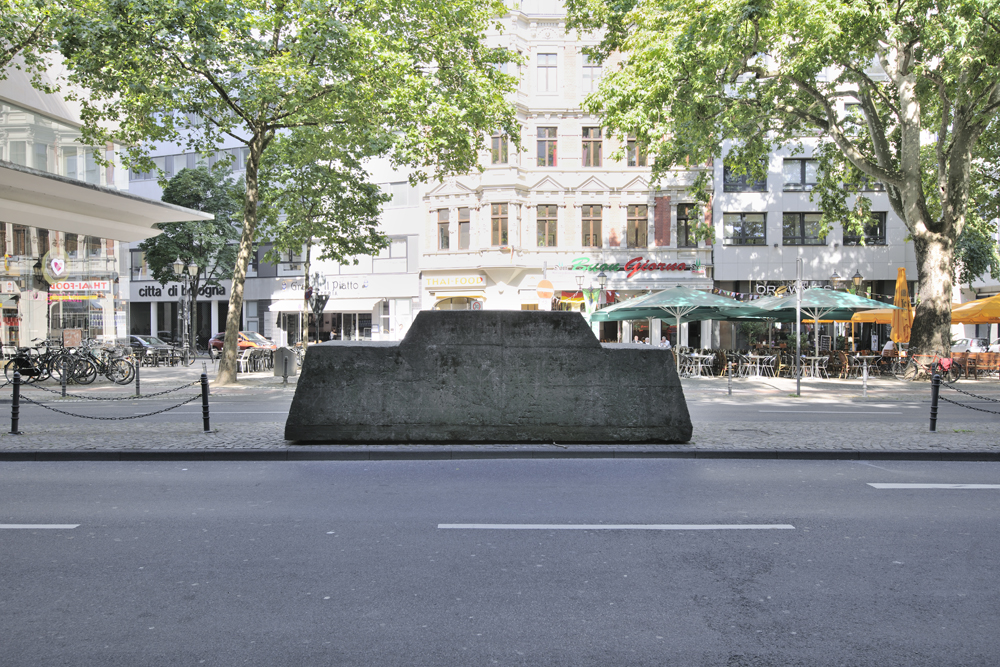

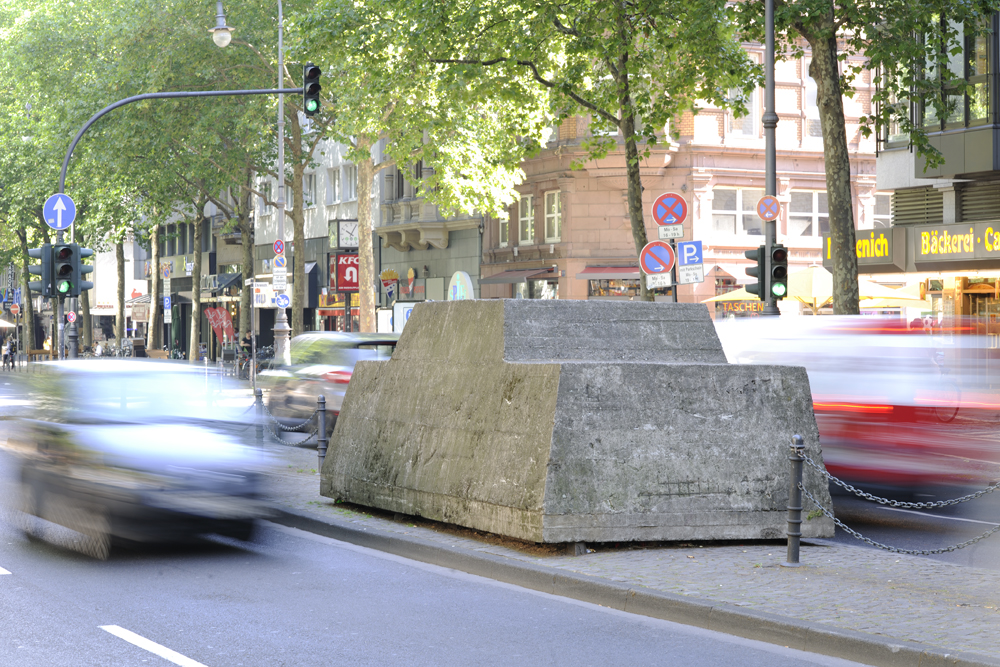
“Utter nonsense, and that’s putting it mildly!” commented one onlooker when Fluxus artist Wolf Vostell had his own car completely encased in concrete outside of a gallery. Before the concrete truck poured its contents over the vehicle, the car was boarded up in its parking space. When the wooden boards were removed, a sculpture emerged in the basic form of a car. Vostell also installed a parking meter in front of the work. Of course, the onlooker’s reaction was perfectly in line with the artist’s intentions – he wanted the work to be absurd, revealing, and take a stand.
By rendering the main status symbol of progress inoperable, he created an unmistakable commentary on society’s increasingly dominant orientation towards blind consumption and faith in progress.
However, the artist did not succeed in permanently occupying a secure parking space for his work in central Cologne. Because the spot was used for functioning cars, Stationary Traffic was placed on the median between two lanes.
References:
http://de.wikipedia.org/wiki/Ruhender_Verkehr_%28Plastik%29
http://m.skulpturenfuehrer.de/de/skulpturenfuehrer-koeln/ort/ruhender-verkehr
Wolf Vostell
← Zur Startseite
Cologne, Hohenzollernring 25
